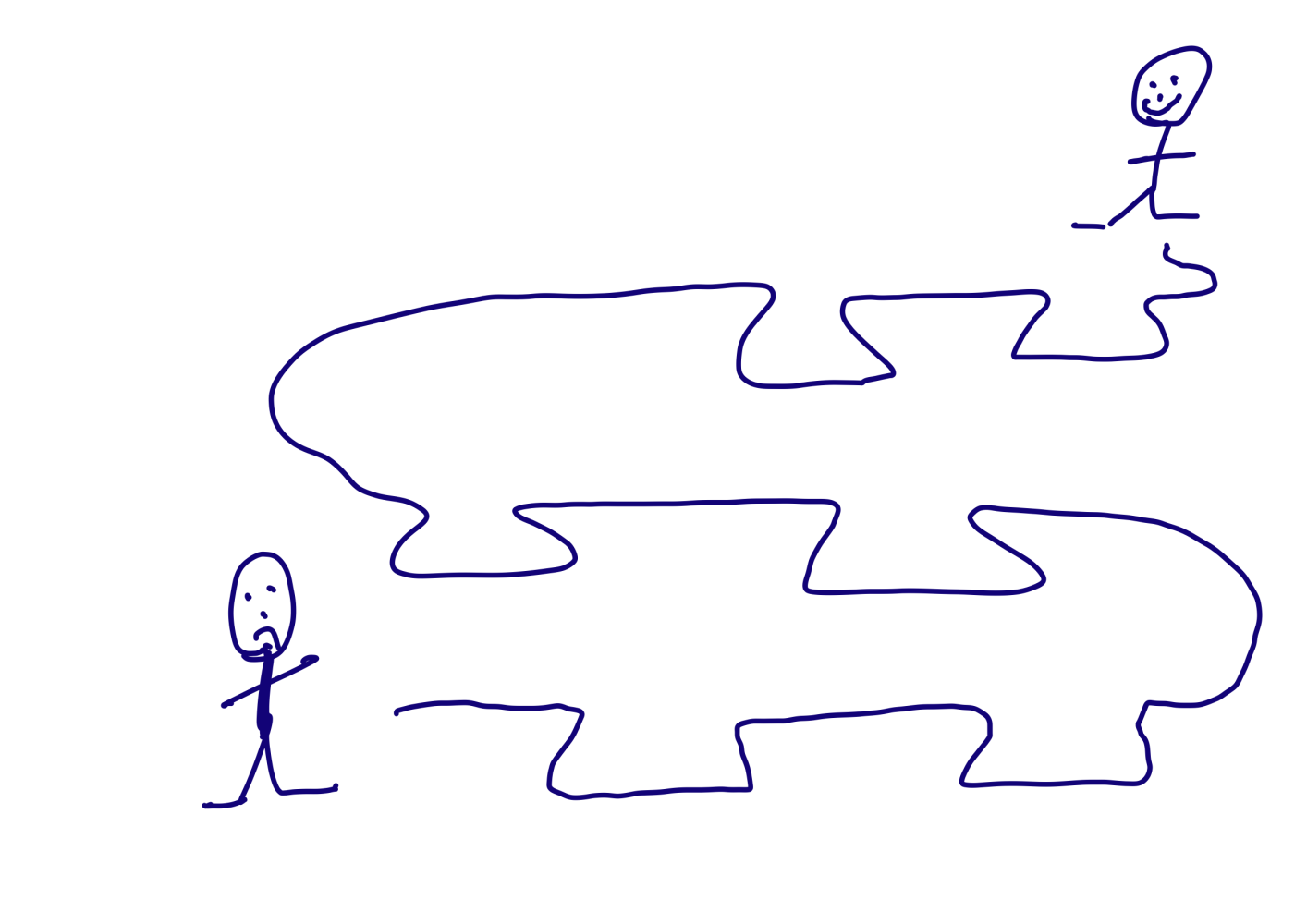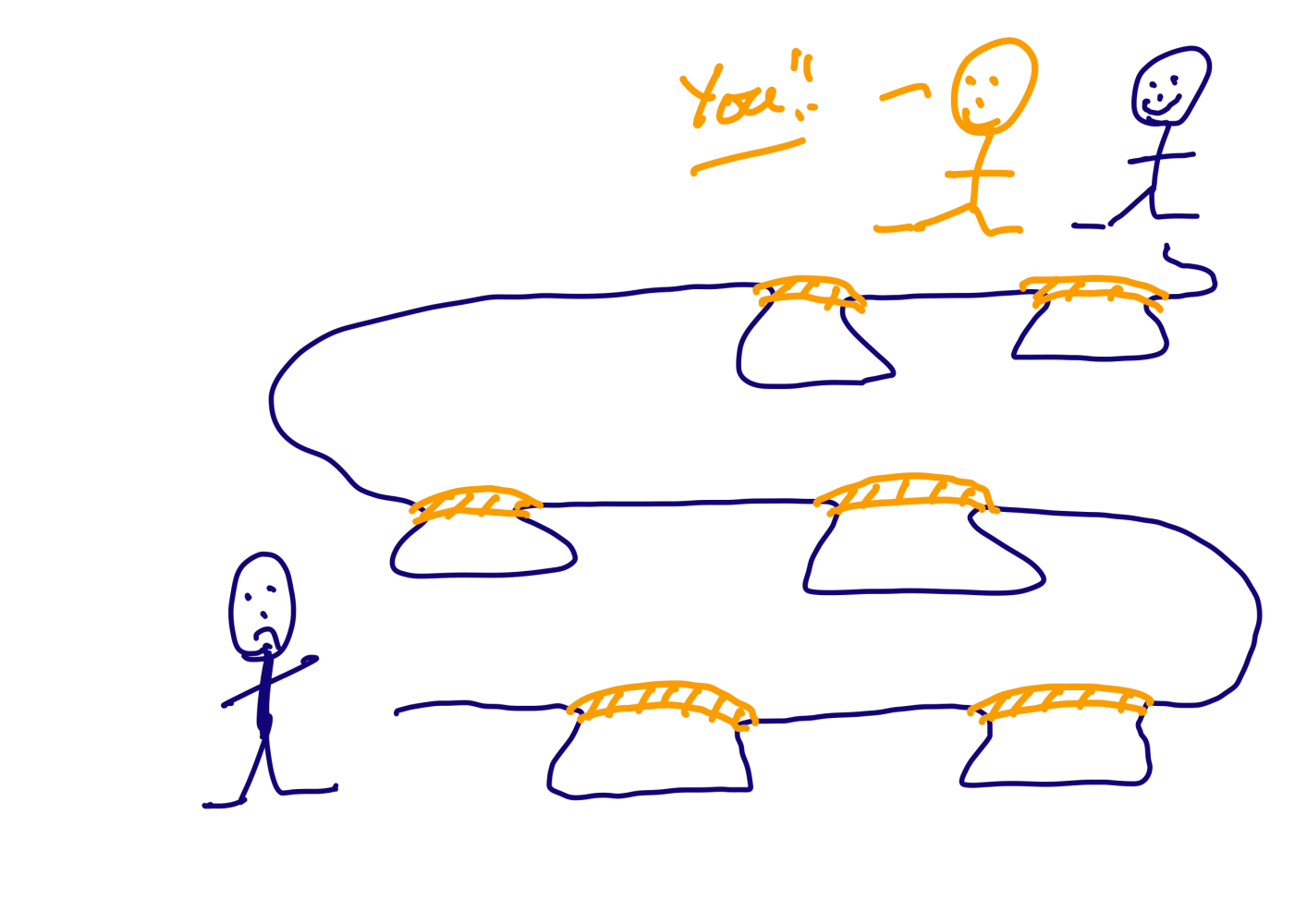How To Convert More Conversations To Consulting Clients
If you've been in consulting, sales or client getting for your consulting business, you've probably come across the 'Consultative Sales Model' or even SPIN questioning frameworks.
You are almost certainly following a similar framework in your business.
The scenario goes like this on a sales or discovery call
You ask questions to discover their current unhappy state - A
You ask questions to uncover their current desired end state - B
You seek to position yourself as the bridge between points A and B
IDENTIFYING ROADBLOCKS AND WIDENING GAPS
Traditionally, the way you go about building a bridge between point A and point B is by looking at specific areas with questions such as:
What have they tried before that has failed - and why?
The cost of inaction - to establish reasons big enough to break them out of the inertia of sticking with the status quo
The opportunity cost of inaction - to establish reasons big enough to break them out of the inertia of sticking with the status quo
The risk to them personally if the current situation continues
Every one of those rocks you toss into the cavern is effectively making the need for the bridge between point A and B more vivid, real and urgent.
But there's more...
WIDENING THE GAP
The same process is also described as widening the gap.
What your brilliant questioning process is doing is widening the gap between their initial point A and B to the new point A and B.
You are effectively widening the distance of the gap. I didn't represent it in my expensively created artists impression above as well as I could.
rather than widening the current gap between A and B.What we are really doing is creating a new point C
Part of the reason we widen the gap is to remove any possible idea from a prospect's mind that they can take a leap of faith and jump from A to B by themselves—without you.
THE PROBLEMS WITH THIS APPROACH
I've been running sales meetings like this for 20+ years. It's effective.
It's also non-manipulative if you truly believe that your service can benefit the client and that by either:
1) taking no action (status quo) or
2) attempting a solution on their own they will be in a worse position than if you acted as the bridge to their desired end result.
But in today's digital-first economy, there are challenges with this approach:
Time: I remember sitting in board rooms running this process for 45 minutes before I ever talked about us, our solution or our pricing. Very often the solution overview was a minute or two as the questioning process effectively proved we knew what we were doing. Today it's rare that you'll get anywhere near as long before people want to know about your solution.
1 Way: Very often this traditional process was a 1-way dialogue for 45 minutes with the prospect giving answers and the switch happening toward the end where the seller stopped, recapped and offered the solution. My clients and I find that this just isn't working right now. People have shorter attention spans and want a 2-way dialogue with you constantly during the conversation.
ENTER THE 'MINI BRIDGE JOURNEY'
Forgive me but I'm still working on a catchy name for my new model!
What my clients and I have found works really well is to reposition the conversation away from 1 big widening-the-gap session to a journey of small bridges.
There are many ways to do this and here's 2 starting points for you:
1) Quickly drop sparkling key messages to 'sell' small end results
When your prospect tells you something that has been a frustration and you have questioned it you can respond with something like: these
2) Share stories
In your questioning process, you should be eliciting stories. Your questions such as:
Your personal story of why you do what you do
Client stories of how they overcame similar situations
Company and/or personal stories of how you made similar mistakes and it turned out well or the lessons you learned
Stories of prospects that said No and stayed with the status quo and the way that worked out for them
When you reposition your client conversations to a journey, with multiple bridges to close you'll get better buy-in, give better clarity on the results you'll create and convert more of them to revenue.
You now have 3 choices ahead of you:
DECISION #1: Do nothing. Surely you wouldn’t do that if you’ve read this entire post about decisions, actions and leadership?
DECISION #2: Take bold decisive action. If you want personal help to shortcut your time to revenue on the things I discuss in this post then schedule a call with me here. I’ll work out your ‘shoot for the moon’ position and give you some level of clarity on a challenge you are facing or a goal you want to attain. And IF we both think I can help, we can talk about me working with you 1 on 1 to make big shifts in your vision, action orientation, clarity and RESULTS.
DECISION #3: Dip your toe in the water. Sometimes small steps provide momentum. Upgrade to a paid membership ($99 a month) and get instant access to over $1K worth of training courses, a chat app to ask me questions AND the huge value of having me on your team. I’ll undoubtedly see a bigger vision for you than you can do on your own and I’ll make it my mission to get you there.







